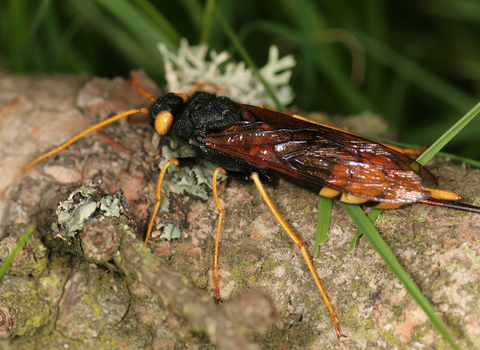
Giant horntail ©Dr Malcolm Storey
Giant horntail
With yellow-and-black bands, the giant horntail looks like a large wasp, but is harmless to us. The female uses her long, stinger-like ovipositor to lay eggs in pine trees, where the larvae then develop.
Scientific name
Urocerus gigasWhen to see
May to AugustSpecies information
Category
Statistics
Length: up to 4cmCommon.
